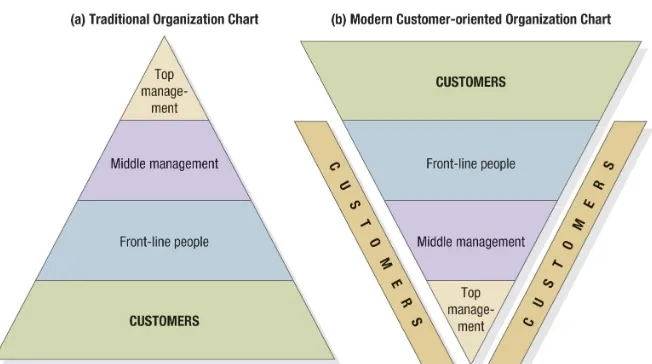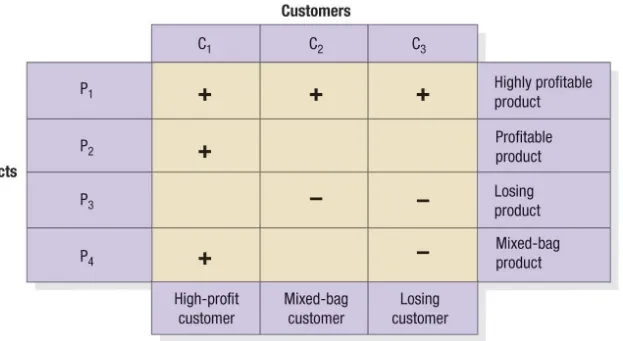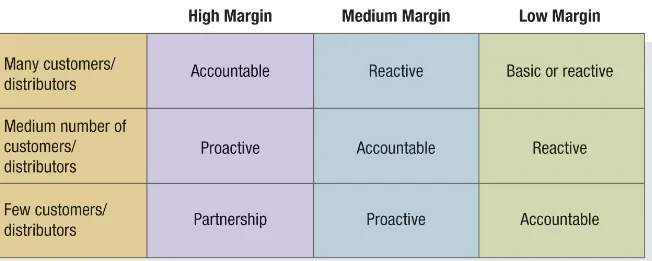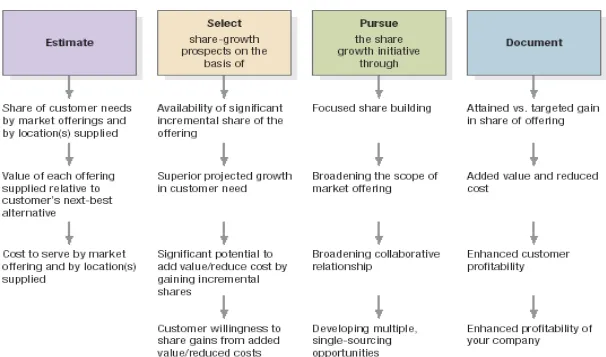MARKETING MANAGEMENT
12th edition
5
Creating
Customer Value,
Satisfaction, and
Loyalty
5-2
Chapter Questions
• What are customer value, satisfaction, and loyalty, and how can companies deliver
them?
• What is the lifetime value of customers?
• How can companies both attract and retain customers?
5-3
5-4
5-5
eBay epitomizes the
5-6
Figure 5.2 Determinants of
Customer-Delivered Value
5-7
5-8
Loyalty
A deeply held commitment to re-buy or re-patronize a preferred product
5-9
The Value Proposition
5-10
5-11
5-12
Measuring Satisfaction
Periodic Surveys Periodic Surveys
Customer Loss Rate Customer Loss Rate
Mystery Shoppers Mystery Shoppers
Monitor competitive performance
5-13
Countrywide
received the
#1 customer
satisfaction
rating from
J.D. Power
and
5-14
Product and Service Quality
Quality is the totality of features and characteristics of a product or
service that bear on its ability to satisfy
5-15
Quality
Conformance quality
5-16
Total Quality Management
TQM is an organization-wide approach to continuously
improving the quality of
5-17
Maximizing Customer Lifetime Value
Customer Profitability
Customer Equity
5-18
5-19
Estimating Lifetime Value
• Annual customer revenue: $500 • Average number of loyal years: 20 • Company profit margin: 10
5-20
Drivers of Customer Equity
Value Equity
Relationship Equity
5-21
5-22
Framework for CRM
Identify prospects and customers
Differentiate customers by needs and value to company
Interact to improve knowledge
5-23
Harrah’s
targets
5-24
CRM Strategies
Reduce the rate of defection Reduce the rate of defection
Increase longevity Increase longevity
Enhance “share of wallet” Enhance “share of wallet”
Terminate low-profit customers
Terminate low-profit customers
5-25
Table 5.1
Mass vs. One-to-One Marketing
Mass
• Average customer • Customer anonymity • Standard product
• Mass production • Mass distribution • Mass advertising • One-way message • Economies of scale
One-to-One
• Individual customer • Customer profile
• Customized market offering
• Customized production
5-26
Customer Retention
• Acquisition of customers can cost 5 times more than retaining current customers.
• The average customer loses 10% of its customers each year.
• A 5% reduction to the customer defection rate can increase profits by 25% to 85%.
5-27
Describing Market Dynamics
5-28
Figure 5.4 The
Customer-Development Process
Prospects Suspects
Disqualified
First-time
customers customersRepeat Clients Members
5-29
Building Loyalty
Partnership
Proactive
Accountable
Reactive
5-30
5-31
Figure 5.5
5-32
Reducing Customer Defection
• Define and measure retention rate.
• Distinguish causes of customer attrition.
• Estimate profit loss associated with loss of customers.
5-33
Forming Strong Customer Bonds
Add financial benefits
Add social benefits
5-34
5-35
5-36
Database Key Concepts
• Customer database • Database marketing • Mailing list
• Business database • Data warehouse
5-37
5-38
Using the Database
To identify prospects To identify prospects
To target offers To target offers
To deepen loyalty To deepen loyalty
To reactivate customers To reactivate customers
5-39
Focus
on
5-40
Marketing Debate
Online Versus Offline Privacy?
Take a position:
1. Privacy is a bigger issue in the
online world than in the offline world. 2. Consumers receive more benefit than risk from marketers knowing
5-41
Marketing Debate
Choose a business and show how you would go about developing a





